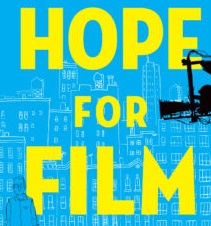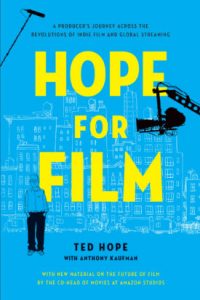
Ted Hope is back with another installment of Hope for Film with new insight following his time working in production for Amazon Studios.

The second edition of Hope for Film, much like the first edition, is essential reading for anybody looking to produce. Hope’s insight comes from someone who as worked many facets of independent film. most recently with Amazon. Strangely enough, Hope got the Amazon gig as a result of the first edition.
Hope offers his insight as someone who has produced over 70 films as a producer. Some of them even got nominated for Oscars. Among the filmmakers that Hope has worked with over the years are Ang Lee, Eddie Burns, Alan Ball, Todd Field, Hal Hartley, Michel Gondry, Nicole Holofcener, and Todd Solondz. Hope shares his experiences of working with them and the highs and lows that came with doing so. It goes without saying but some filmmakers are easier to work with than others.
I read the first edition when it came out some time ago. While I would certainly recommend that edition, the key thing to note is that this book is written with the streaming era in mind. Hope really expands in the book’s appendix for the new edition. The first appendix offers critical creative strategies for the streaming era. Meanwhile, Hope offers 140 problems and opportunities for the creative world in the second appendix.
In the second appendix, there was something Hope wrote that really stood out to me. I say this especially because I have also noticed it and maybe even more so since the pandemic started. What Hope writes as the 92nd problem/opportunity is as follows:
VOD and streaming are both still treated as a second-class citizens, as very few online premieres are currently reviewed in major in media outlets. When will the major media publications get wise to it? Is it that they fear they would then lose the advertising for the movies? Would they not be opening up a new advertising revenue source? What’s wrong with this picture?
Well, a lot of this comes down to the publicists not doing their jobs. No offense to any publicist that I know. I remember having to put a filmmaker in touch with a critic for a film review. All because the publicist simply didn’t do their job! For a film to get coverage, publicists must do their job. At the same time, many of us have had to shift coverage once the studios started to delay their films earlier this year. Myself included. I was all set to cover SXSW when the world shut down in March and immediately had to change my plans going forward. Many indie films going to Digital and VOD just don’t get the same coverage. On a similar note, the smaller films don’t draw the same traffic.
Hope for Film is highly recommended and essential reading for any aspiring filmmaker.







